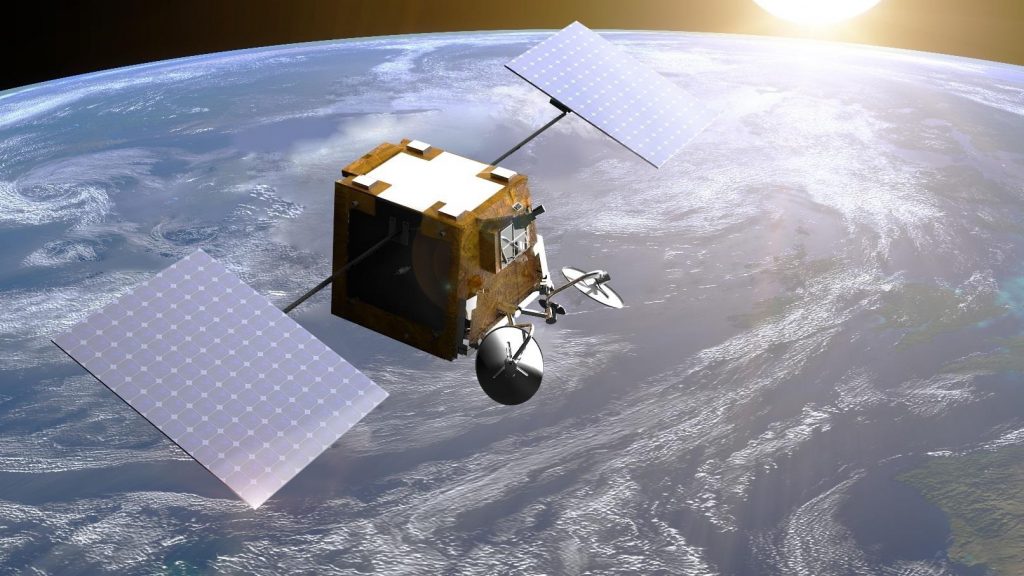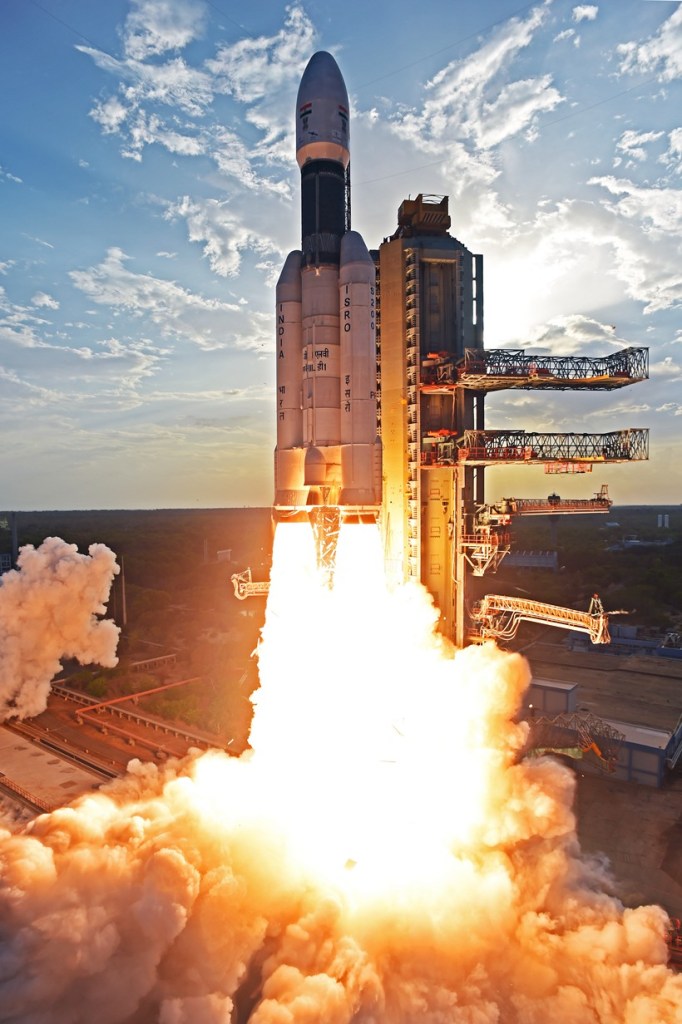Featured Image Credit: ISRO
Lift Off Time | October 22, 2022 – 18:37 UTC October 23, 2022 – 00:07 UTC+5:30 |
|---|---|
Mission Name | OneWeb 14 |
Launch Provider | Indian Space Research Organisation |
Customer | OneWeb |
Rocket | GSLV Mk III |
Launch Location | Second Launch Pad, Satish Dhawan Space Centre, India |
Payload mass | 5,015 kg (~11,000 lbs) |
Where did the satellites go? | Polar low-Earth orbit. Initial orbit TBD, final orbit of 1,200 km |
Did they attempt to recover the first stage? | No, this is not a capability of GSLV Mk III |
Did they attempt to recover the fairings? | No, this is not a capability of GSLV Mk III |
Were these fairings new? | Yes |
This was the: | – 5th launch of GSLV Mk III – 13th operational launch of OneWeb satellites – 143rd orbital launch attempt of 2022 |
Where to watch | Official OneWeb Relay |
How Did It Go?
The Indian Space Research Organisation successfully launched 36 OneWeb internet communication satellites atop its GSLV Mk III rocket. Lifting off from the Second Launch pad, at the Satish Dhawan Space Centre, in India, the OneWeb 14 satellites were placed into a low-Earth polar orbit. Over the coming months, the satellites will raise their orbit to a 1,200 km polar. OneWeb 14 boosted the number of OneWeb satellites launched to 454.
What Is OneWeb?
OneWeb is a planned satellite internet constellation with the goal of providing internet coverage to the entire globe. Similar to SpaceX’s Starlink, the OneWeb constellation aims to deliver semi-low-latency internet to locations where ground-based internet is unreliable or unavailable.
OneWeb plans to have 648 satellites in its constellation, providing them with the 600 satellites needed for global coverage and an additional 48 on-orbit spares in case a satellite fails. These satellites are in a 1,200 km low-Earth polar orbit, which is significantly lower than the global internet services available today. The current satellite internet solutions orbit 35,786 km above the Earth, in geostationary orbit. However, the orbit of OneWeb’s satellites is still significantly higher than the ~550 km orbit that SpaceX’s Starlink satellites use. OneWeb is expecting the final 648 satellite constellation to provide download speeds of roughly 50 Mb/s.

The constellation consists of 18 orbital planes, with 36 satellites in each plane. However, in May 2020, OneWeb submitted an application to the FCC, requesting to increase its constellation size to 48,000 satellites. OneWeb has also announced that the second generation of the OneWeb network will be a global navigation satellite system (GNSS), like GPS.
What Is A OneWeb Satellite?
Each OneWeb satellite has a compact design and a mass of 147.5 kg. The satellites are each equipped with a Ku-band antenna, operating between 12 and 18 GHz. One interesting note is that these satellites will use a slightly abnormal frequency, eliminating interference with satellites in geostationary orbit.
The OneWeb satellites were built by OneWeb Satellites, which is a joint venture between OneWeb and Airbus.
The satellites are designed to safely deorbit after 25 years. However, this leaves many concerned as this orbital region is already the most crowded with space debris.

OneWeb’s Return
In March 2020, OneWeb filed for Chapter 11 bankruptcy and laid off most of its employees. However, OneWeb was able to maintain operations for the 74 satellites they currently had in orbit. In November 2020, the UK government and Bharti Enterprises invested over a billion US dollars into OneWeb with the goal of finishing the constellation.
As if these issues weren’t enough, in wake of new European sanctions at the start of the year OneWeb was unable to launch their satellites on the Soyuz vehicle–the rocket that launched the first 13 OneWeb missions. In lieu of this, on April 20, 2022, OneWeb announced launches atop the GSLV Mk III.
What Is GSLV Mk III?
The GSLV Mk III (or Geosynchronous Satellite Launch Vehicle Mark III) is a three-stage medium-lift launch vehicle developed by the Indian Space Research Organisation (ISRO). As the name implies, the rocket is designed to launch payloads into geostationary Earth orbit (GEO), and will also be used to launch crew to ISRO’s planned space station.
GSLV Mk III is capable of placing 10,000 kg into low-Earth orbit and up to 4,000 kg into geostationary transfer orbit (GTO). Also as the name implies, the vehicle’s predecessor was GSLV Mk II. Overall, the vehicle masses 640,000 kg and has a total height of 43.43 meters.

First Stage
The first stage of the launch vehicle consists of a pair of S200 solid rocket boosters. Each booster runs on hydroxyl-terminated polybutadiene (HPTB) and is 3.2 meters wide and 25 meters long. Each SRB carries 207 tonnes of propellant which is burned through in 128 seconds. Overall, each booster produces a peak thrust of 5,150 kN and 274.5 seconds of Isp.
Both boosters are equipped with a flex nozzle that can be vectored to control the vehicle’s pitch, roll, and yaw. Somewhat interestingly, the hydraulic fluid used to move the nozzle is stored at the base of each booster in a small tank.
Second Stage
The second stage (designated L110) is an air-lit core stage that is four meters in diameter and 21.39 meters tall. Equipped with two Vikas gas generator-powered engines, the second stage produces 1,598 kN of thrust with 293 seconds of Isp. This Isp is somewhat low compared to other gas generator engines due to the use of hypergolic propellants; the engines run on UDMH and N2O4.
Like one the first stage, because both Vikas engines are capable of gimbaling, the engines provide pitch, yaw, and roll control to the vehicle.
The second stage ignites 114 seconds after launch and burns for ~200 seconds. Shortly before ignition, the vehicle sheds the “nozzle closure system,” which is used to protect the Vikas engines from the SRB exhaust during ascent. This is not a problem on sustainer stages, like the space shuttle and SLS, since the RS-25 engines are ignited before the SRBs, protecting the engine.
Third Stage
Atop the core second stage sits a cryogenic third stage, designated C25. This stage is also 4 meters in diameter and 13.5 meters long. The engine runs on liquid oxygen (LOX) and liquid hydrogen (LH2), giving the stage a specific impulse of 434 seconds. The stage is equipped with a single CE-20 engine, which runs on the gas generator cycle and produces 197 kN of thrust.
Fairing
Atop the third stage lies the 5-meter diameter payload fairing. Much like Rocket Lab, Firefly, and SpaceX, this payload fairing is made from composites.





